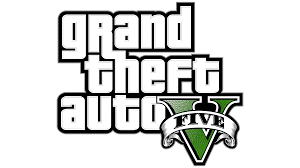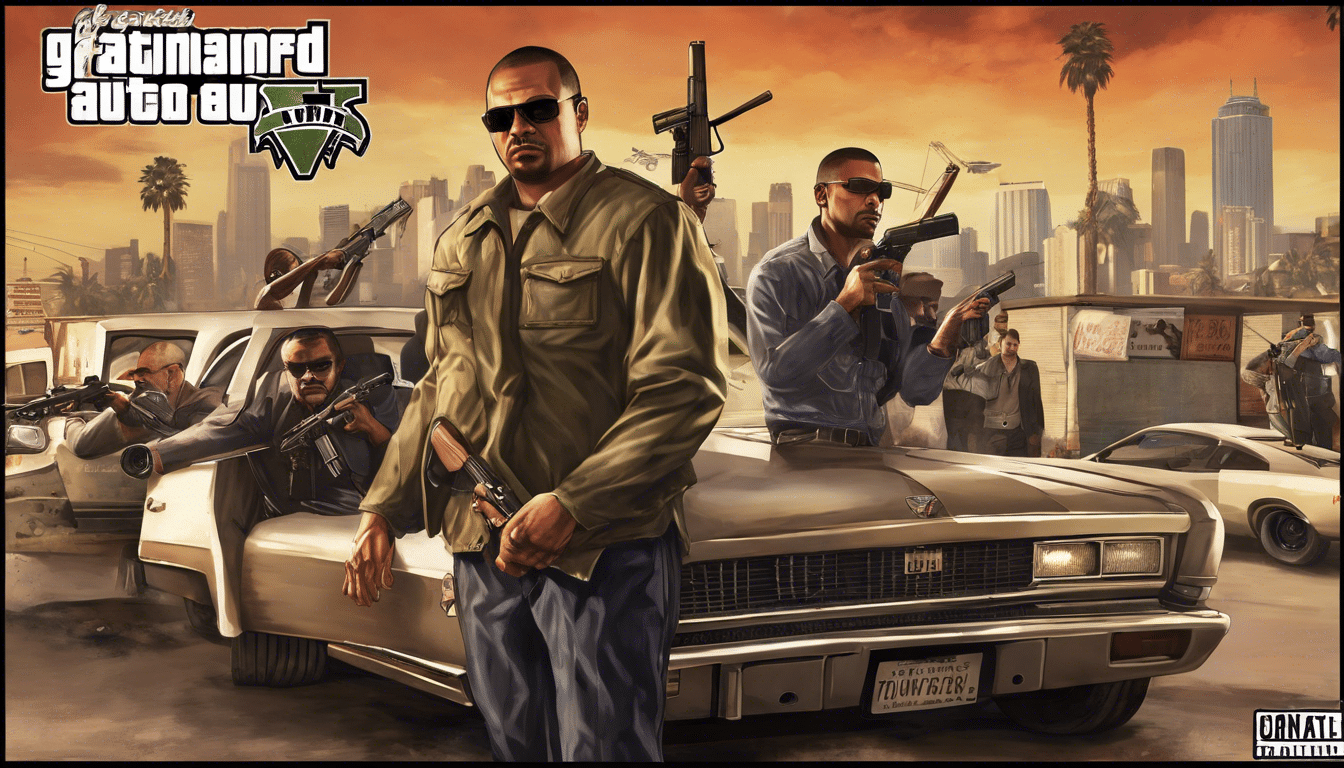Let’s dive into the controversy surrounding GTA: Cartel War! What are the issues and debates that make this subject ripe for controversy? Let’s discover together the different perspectives and analyzes that fuel this passionate discussion.
The roots of conflict: origins and evolution of cartels in GTA
The first games and the emergence of cartels
The Grand Theft Auto saga, since its beginnings, has always flirted with the boundaries of legality, immersing players in a rich and complex criminal universe. The first games in the series primarily featured urban gangs and local criminal organizations. However, it was from GTA: Vice City that drug cartels took center stage in the plot. Influenced by popular culture of the 80s, the game depicts conflicts between various mafia groups, including the famous Colombian cartels.
The rise of cartels in GTA: San Andreas
GTA: San Andreas marked a turning point by further expanding this criminal universe. Players will find a real gang war, with factions like the Ballas, the Vagos, and of course, drug cartels. The game offers even greater immersion in territorial struggles and violent clashes for control of traffic. This rise in power of the cartels is part of a rich narrative framework, where alliances and betrayals follow one another at a frantic pace.
The consolidation of cartels in GTA IV and GTA V
With the arrival of GTA IV and GTA V, the cartels have only strengthened their presence. These games were able to depict in a realistic and dramatic manner the repercussions of internal struggles and bloody rivalries between several criminal factions. In GTA IV, the complexity and depth of characters such as Niko Bellic offer a more nuanced view of the motivations and issues behind these organizations. In GTA V, the Mexican cartels take on an even greater importance, with intertwined stories of betrayal and score-settling.
Cultural and historical influences
The creators of Grand Theft Auto have always relied on real events and socio-political dynamics to inform their scenarios. The drug wars in Latin America, the rise of cartels and the spectacular police operations against these criminal organizations often served as a backdrop. These influences allow the games to maintain a certain authenticity while offering thrilling and realistic scenarios.
Power issues and territorial struggles
Another central aspect of cartels in GTA is their relentless quest for power and territorial control. Players are often involved in missions where they must conquer areas, eliminate rivals, or protect their own territory against enemy assaults. These struggles for control are exacerbated by internal rivalries, betrayals, and fleeting alliances, making the gaming experience even more immersive and exciting.
Impacts and consequences for the main characters
Cartels aren’t just antagonists in GTA; they also have a profound impact on the main characters. The protagonists, whether associated with or in opposition to these organizations, often suffer the repercussions of their actions. They must navigate a world where loyalties are fragile and dangers are ever-present, adding a layer of complexity and depth to their narrative development.
Evolution and adaptations in GTA Online
With the advent of GTA Online, players have the opportunity to interact even more directly with the cartels. Special missions, events and regular updates expand the criminal universe and immerse players in new intrigues linked to the cartels. This online expansion offers renewed dynamics and allows you to continually test new strategies and approaches to control the Drug Empire.
Thoughts on the future of cartels in GTA
When considering the future of the Grand Theft Auto franchise, it is inevitable that the cartels will continue to play a key role. With each new edition, the developers will be sure to incorporate contemporary elements, drawing inspiration from current events and developments in the real-life criminal world. Players can expect even more refined storylines, deeper storylines and ever more immersive gameplay experiences, as cartels evolve and adapt to the new realities of organized crime.
From virtual to reality: the influence of GTA on perceptions of cartels
Cartels and Popular Culture: A Long History
Interest in drug cartels and their sprawling networks is not new. For decades, popular culture, whether through films, television series or books, has seized on this theme to fascinate and frighten the public. But how does their representation in video games like Grand Theft Auto: Cartel War influence our perception of these criminal organizations?
The Immersion of Grand Theft Auto: Between Fiction and Reality
Grand Theft Auto, a globally recognized video game series, has often stood out for its realistic and daring approach to urban crime. In GTA: Cartel War, this immersion reaches a new height by immersing players in a world where cartels and their complex networks are at the center of the plot. Players are invited to take part in violent missions, illicit trafficking and conspiracies, while exploring a richly detailed environment.
The Perception of Cartels Through the Prism of Gaming
Video games have a unique quality: they allow players to enjoy an immersive experience, often more intense than that offered by other forms of media. By playing characters involved in the cartels, players take an insider’s view of these criminal networks. This often leads to a more nuanced perception of cartels, where members are seen not only as criminals, but also as individuals with their own motivations and moral dilemmas.
The Consequences on Reality: A Romanticized Vision?
However, this intense and continuous immersion can also have negative effects. It is possible that some players come to romanticize the cartels, perceiving their criminal activities as glamorous or heroic. This phenomenon can be particularly worrying for young players or those with less developed critical thinking skills.
Disturbing Parallels
Some studies have suggested that the increased realism in video games, like GTA, may blur the lines between fiction and reality for some players. Behaviors and attitudes adopted in the game can, in certain cases, influence real actions. Although most players are able to distinguish gaming from reality, it remains crucial to treat this content responsibly.
Education and Video Games: An Essential Balance
To mitigate potentially negative effects, it is essential to inform players, particularly younger ones, about the realities of organized crime. Complementing gaming experiences, open and educational discussions about the real-world consequences of drug trafficking and violence can help contextualize and critique fictional depictions of cartels.
- Promote discussion around video games and their content
- Encourage a critical approach to the scenarios presented
- Promote educational perspectives that complement the gaming experience
A Look at the Future
As technology continues to advance, the line between the real and the virtual becomes increasingly blurred. Video game developers bear an important responsibility: that of creating captivating experiences without harming public perception on sensitive subjects like cartels. As Grand Theft Auto and other franchises continue to explore these themes, it will be interesting to see how they manage to balance the appeal of realism with ethical and responsible representation.
Moral and ethical aspect: glorification or denunciation in GTA?
An immersion in virtual crime
Grand Theft Auto, more commonly known as GTA, is one of the most popular and controversial video game franchises. A subject of debate since its debut, the series has often been accused of glorifying violence, crime and gangsters. One of the recurring themes of GTA games is the presence of drug cartels. Between glamor and brutality, where is the moral line drawn by these games?
The glamor of the criminal life
There’s no denying that much of GTA’s appeal lies in the stylized and sometimes exaggerated depiction of the criminal life. Players are immersed in a world where luxury cars, lavish villas and extravagant parties are within reach. Cartel leaders are often portrayed as charismatic figures, arousing an unhealthy fascination.
The game allows players to experience a rise in power through missions involving heists, chases and drug deals, often with flamboyant rewards. This representation can give the impression that the criminal life is not only lucrative but also attractive, which raises the question of glorification.
The brutality and reality of cartels
However, a more nuanced analysis of the game reveals that GTA doesn’t just paint the cartels in a seductive light. The developers do not hesitate to show the dark and often sordid sides of this life. Betrayals, murders and internal conflicts are commonplace. Players frequently encounter the raw violence and dehumanization that comes with life in the cartels.
Missions often feature tragic consequences and heartbreaking moral choices, highlighting the repercussions of crime. This tension between attraction and repulsion raises complex questions about the intentions of the game’s creators.
Moral and ethical dilemmas
By immersing players in morally ambiguous situations, GTA invites reflection on the ethical choices of the characters and, by extension, the players themselves. The dilemmas encountered in the game, ranging from choosing to betray a friend to deciding whether to save or doom a life, are designed to spark introspection.
This duality may in fact serve as an implicit critique of the criminal life, suggesting that, despite external attractions, the path of criminality is fraught with internal conflict and personal destruction. Paradoxically, by allowing these choices, the game could encourage a better understanding of the ethical implications of gangster life.
Impact and influence on players
The question of the impact of video games on real-world behavior is complex and controversial. Some critics believe that games like GTA help desensitize players to violence and normalize crime. Others argue that these games offer catharsis, allowing players to channel aggressive impulses in a virtual and harmless way.
It’s also possible that GTA serves as a cautionary tale, exposing players to the harsh realities of the criminal world. For example, the inevitable and often disastrous consequences of illegal acts may deter players from engaging in such behaviors in real life.
The balance between fiction and reality
The GTA series succeeds where others fail by maintaining a delicate balance between fiction and a crude representation of reality. Games are, above all, works of fiction, designed to entertain, but they do not turn a blind eye to the brutality of the world they depict.
By mixing glamor and horror, GTA encourages players to take a closer look at the consequences of crime. This balance can be seen as a subtle denunciation of the cartels, while providing an exciting and immersive gaming platform.
GTA continues to fuel the debate over depictions of crime in video games, forcing players, designers and critics to question the moral and ethical impact of these popular games. The dilemmas presented in the game pose crucial questions about the nature of attraction and repulsion toward the criminal life.
Sociocultural impact: how does GTA shape public opinion on cartels?
Cartels and the Virtual World of GTA
Grand Theft Auto, often abbreviated to GTA, is globally recognized for its explosive blend of crime and open-world gaming. Among its many facets, the representation of drug cartels particularly attracts attention. These criminal organizations are depicted with a brutality and complexity that fascinate and frighten at the same time. The game shines a harsh light on the ruthless activities of the cartels, providing a fantastical setting that engages players from all walks of life.
Public Perception and Normalization of Violence
One of the most controversial aspects of GTA is its ability to influence public opinion on cartel-related violence. Through thrilling missions and dangerous scenarios, players are immersed in a reality where violence is a common response to conflict. This normalization of violence can shape, especially among young players, a biased perception where the criminal activities of cartels are seen as acceptable elements of daily life.
Clichés and Stereotypes: A Double Edge
Cartels in GTA are often portrayed according to specific stereotypes: cruel bosses, internal betrayals and bloody turf wars. These clichés contribute to the mythologizing of cartels as omnipotent and frightening entities, but they can also reinforce erroneous preconceptions about certain cultural and ethnic communities. While these stereotypes serve the game’s dramatic narrative, they potentially propagate harmful dynamics within real-world society.
Immersion and Empathy: A Lesson in Humanity
Despite its criticisms, GTA sometimes succeeds in humanizing the characters involved in the cartels. The personal stories and moral dilemmas of the members of these criminal organizations provide a nuanced perspective. The player can feel empathy for characters with tragic backgrounds, led to commit reprehensible acts by circumstances. This immersion into their personal world expands our understanding of the human motivations behind crimes.
Impact on Popular Culture
GTA goes beyond gaming screens to influence popular culture. Depictions of the cartels in the game cross over into other media and inspire conversations on social media, chat rooms, and even in music and films. This phenomenon helps maintain the topic of cartels as a relevant and fascinating subject, while shaping the way the public perceives the reality of these criminal organizations.
Ethical and Moral Debates
Depictions of violence and crime in GTA also spark ethical and moral debates. Questions arise about the responsibility of video game developers for the distribution of potentially harmful content. To what extent do these representations actually influence player behavior? This debate is essential to understanding the sociocultural impact of games like GTA and to promoting more critical and conscious media consumption.






Leave a Reply